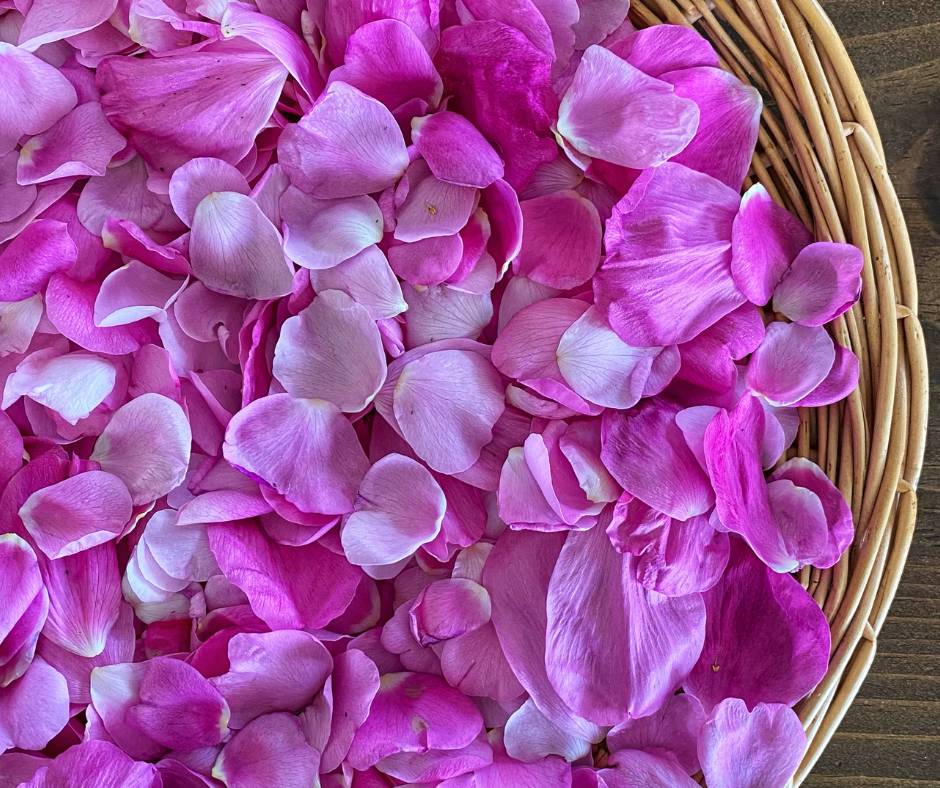Ayurveda, the ancient holistic healing system that originated in India, revolves around the foundational concept of the doshas—three fundamental energies that govern all things, including the physiological and psychological aspects of the human body. These doshas – Vata, Pitta, and Kapha – represent distinct combinations of the five Ayurvedic elements (earth, water, fire, air, and space) and are integral to understanding one’s unique constitution and maintaining overall well-being.
In today’s post, we’ll explore Kapha dosha, which is a combination of the elements water and earth.
There are a few primary times we want to pay special attention to balancing Kapha. First, the qualities associated with this dosha increase in spring, so supporting and balancing Kapha dosha in the body-mind during that time of year is especially helpful. Second, if you tend to be slow, cold, moist, and heavy, you most likely either have a Kapha constitution or a Kapha imbalance. Either way, these recommendations will help create more balance. Finally, phases of life can also be more influenced by a particular dosha. Kapha is most predominant in childhood, so if you have kids, this is a good dosha to be aware of.
Read on to learn more, and make sure not to miss the two videos near the end!
Kapha
Kapha dosha is one of the three fundamental energies or constitutions that govern the physiological and psychological functions of the body in Ayurveda. It regulates the structure and lubrication of the body, providing support and nourishment to cells, tissues, and organs.
Kapha is characterized by attributes that reflect the nature of the water and earth elements:
- heaviness
- solidity
- coolness
- stability
- slowness
- lubrication

Due to these qualities, Kapha is present in the lymph, blood, saliva, semen, fat, brain, cerebrospinal fluid, the myelin sheath around nerves, and connective tissue. It is responsible for lubricating the joints, gastrointestinal tract, sinuses, lungs, and respiratory tract.
People with a dominant Kapha constitution tend to have a sturdy build and gain weight easily. They often have smooth, oily skin, thick hair, and strong bones. Emotionally, Kapha types are typically calm, nurturing, and compassionate. When Kapha dosha is balanced, it promotes stability, strength, and a sense of grounding.
Signs of Kapha Imblance
When Kapha becomes aggravated or imbalanced, there can be a range of physical and mental disturbances. Common signs that indicate an imbalance in Kapha dosha are weight gain, particularly around the abdomen, hips, and thighs, lethargy, sluggishness, poor digestion with a feeling of fullness, lung congestion, and oily skin. Individuals may experience a lack of motivation, emotional stagnation and depression, excess sleep, mental fog, feel tired and have difficulty moving physically and mentally.
External environmental factors like cold, wet, foggy or humid weather can contribute to Kapha imbalances. In addition, poor food choices and a sedentary lifestyle can also contribute to imbalanced Kapha.
Support and Balance Kapha in Body-Mind
General recommendations to counteract Kapha (for Kapha individuals and during Kapha seasons) include practices that are the opposite of coldness, heaviness, and stability:
- STIMULATION – Use bright colours, uplifting scents, and stimulating activities. Open windows to let in fresh air and natural light. Surround yourself with supportive and uplifting people who inspire you to stay active. Engage in activities that stimulate your mind and creativity, such as art, music, or learning new skills.
- VIGOROUS MOVEMENT – Regular physical activity stimulates circulation, metabolism, and energy levels. Focus on invigorating activities such as brisk walking, dancing, or aerobic exercise.
- WARMTH – Emphasize practices and remedies that create heat. Use herbal teas with warming and energizing spices like ginger, cinnamon, and black pepper, and yoga practices like sun salutations, backbending, and the pranayama kapalabhati.
- LIGHTEN UP – Eat foods that are lighter and easier to digest. Minimize heavy, oily, sweet foods and dairy products.
Specific Practices for the Sites of Kapha
GASTROINTESTINAL TRACT
Kapha provides a mucosal barrier in the digestive tract and mixes with food and digestive enzymes, aiding digestion. This protects the stomach from gastric juices and harmful pathogens when in balance. However, when out of balance, there may be food sensitivities, stomach pain, ulcers, or nausea.
Heal the mucosal layer of your digestive tract in my Heal Your Digestion Program—Calm and Renew—which you can find here.
LUNGS:
One of Kapha’s primary sites is the lungs and respiratory tract, where its liquid quality helps the exchange of gases. If Kapha is out of balance, there may be congestion in the sinuses, chest, and digestive tract, with symptoms such as a runny or stuffy nose, chest congestion, phlegm, or slow digestion.
Try this stimulating and warming breath practice to balance Kapha:
TONGUE:
Another site for Kapha is in the mouth. The sticky and liquid qualities of saliva and the tongue allow good breathing and speech and help us digest and taste food.
How to scrape your tongue:
Tongue scraping is a traditional Ayurvedic practice that gently scrapes the tongue’s surface with a specially designed tool. It is considered an essential part of daily self-care, known as “dinacharya.” This practice is usually performed upon waking up in the morning.
Tongue scraping aids in removing toxins and bacteria, stimulates digestion, and enhances the sense of taste.
- Select a Tongue Scraper: Tongue scrapers are usually made of metal (copper, stainless steel) or plastic. Choose a scraper with a curved shape that fits comfortably on your tongue.
- Position yourself in front of a mirror and stick out your tongue.
- Place the rounded edge of the tongue scraper as far back on the tongue as comfortable, near the base. Gently yet firmly scrape the tongue’s surface, pulling the scraper towards the tip. Repeat this scraping motion several times, covering the entire tongue surface.
- After each scrape, rinse the tongue scraper under running water to remove any debris or residue.
- Once complete, rinse your mouth thoroughly with warm water to remove loosened debris and refresh the mouth. Then, drink a glass of warm water to rehydrate the body and aid in eliminating toxins.
LYMPH NODES:
Kapha is also present in many other areas of the body, like the lymphatic system. Lymph fluid helps to transport wastes and toxins out of tissues and the body.
Support your lymphatic system with this Yoga Practice Video for Immunity and Lymphatic Flow.
Vibrant Health with Balanced Kapha
In Ayurveda, achieving harmony within the body and mind involves recognizing and nurturing the inherent qualities of each dosha. Understanding Kapha’s stable and supportive nature can help us make conscious choices aligned with our unique constitution, the season, and our age!







